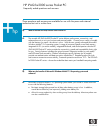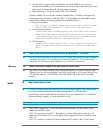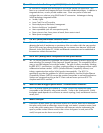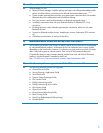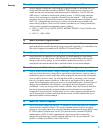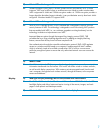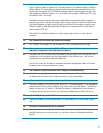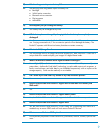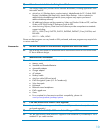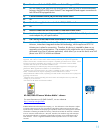
2
• ActiveSync® 4.0 support offers new features such as the ability to sync pictures in
contacts and wirelessly sync over Bluetooth®, as well as an improved partnership wizard
allowing for an improved overall synchronization experience.
• Enhanced security - Compliant with the FIPS 140-2 standard.
Windows Mobile 5.0 now includes Windows Media® Player 10 Mobile, with support for
technologies such as Universal Serial Bus (USB) 2.0, and enables improved media content
organization, making it an amazing platform for multimedia devices:
• Easy synchronization.
– Users can easily sync media files, playlists and song ratings right from Windows Media
Player 10 Mobile on their desktop PC, and listen to them on their mobile device.
• New formats and content.
– Windows Media Player 10 Mobile supports a variety of file formats including Windows
Media Audio, Windows Media Video and MP3; customers can now access more than
1 million protected digital songs and videos from online services.(Separately purchased
Internet service required; online services may require additional fees.)
• USB 2.0 support.
– Windows Mobile 5.0 adds support for USB 2.0, which will greatly increase file transfer
speeds and synchronization of information between PCs and Windows Mobile-based
devices.
Q . What version of Active Sync works with Microsoft Windows Mobile 5 software?
A . You must use the latest version of Active Sync (4.0 or later) with Microsoft Windows Mobile
5 software. ActiveSync 4.0 is included on your Getting Started Disc. You can download
ActiveSync 4.0 from the Microsoft website at www.microsoft.com/pocketpc.
Q . What is the memory available on the iPAQ Pocket PC hx2000 series?
A . The iPAQ hx2790 series Pocket PC has 256 MB total memory; (192 MB ROM and 64 MB
SDRAM (Up to144 MB user available). The iPAQ hx2490 and hx 2190 series Pocket PC has
192 MB total memory; (128 MB ROM and 64 MB SDRAM (Up to 80 MB user available
memory).
Q . What is WLAN (Wireless LAN)?
A . A WLAN is a type of Local Area Network (LAN) that uses high frequency radio waves rather
than wires to communicate and transmit data among nodes. It is a flexible data
communication system implemented as an extension to or as an alternative for, a wired LAN
within a building or campus. It is also referred to as Wi-Fi.
Q . Why did HP select Wi-Fi 802.11b versus 802.11a or 802.11g?
A . We chose to integrate 802.11b for the wide market availability, the main system power
needs, and small form factor.
802.11a is an extension to 802.11 that applies to wireless LANs and provides up to 54
Mbps in the 5GHz band. 802.11a also has a shorter range and is less power efficient than
802.11b.
802.11g -- applies to wireless LANs and provides up to20+ Mbps in the 2.4 GHz band.
WLAN
Memory



